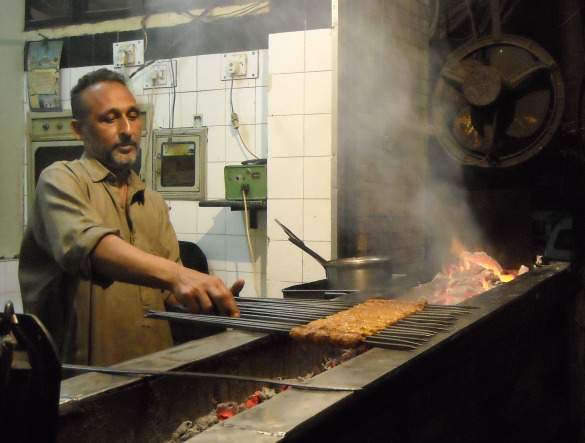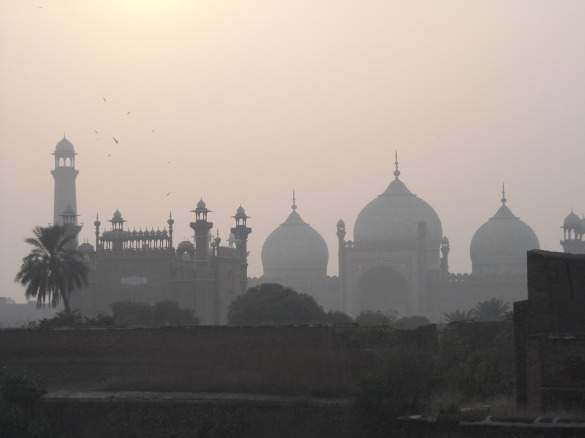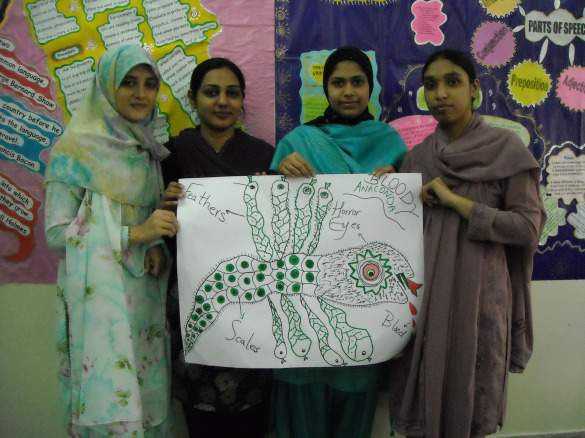You might be tempted to overlook the opportunity to live or teach in Pakistan after realizing that some schools offer “danger pay” bonuses, but with a low cost of living, competitive expat salaries, English as an official language and myriad opportunities for trekking in the country’s mountainous Northern Areas, Pakistan can be an attractive destination for a certain type of expat. If you’re considering Pakistan for your next international teaching stint, take some time to learn about expat life and the education scene in Pakistan.
Transportation and Driving

With the notable exception of Karachi, Pakistan’s cities tend to grow outward instead of upward. Once you realize that most Pakistani cities are centered on two or three main roads and divided into distinct neighborhoods, navigating the urban sprawl becomes a much easier task.
Learning how to use public transportation or how to drive is essential for expats who desire independence in Pakistan. Alternatively, expats can hire a full-time driver for 10,000 rupees ($118) or less per month. Due to the relatively low cost of living, foreigners working in Pakistan often live in upscale neighborhoods, hire a full or part-time maid and may also employ a cook, gardener, nanny and a night watchman.
In the long run, it’s cheaper to have your own car that runs on CNG (compressed natural gas) than on petrol. The most affordable car on the market is the Suzuki Mehran, which is manufactured locally and can easily be retrofitted to run on CNG. You can also get around by taking local buses, finding a trusted rickshaw driver, or cramming yourself into suicidal mini vans. The latter is not recommended.
The best way to get from city to city is by Daewoo bus. You’ll pay a bit more for tickets on the Daewoo compared to other local buses, but Daewoo buses almost always leave on time. These buses are safe for lone women travelers, as every bus has a female stewardess and women are seated together. The stewardess serves snacks and drinks and attends to travelers’ needs. The customer service is often better on Daewoo buses than on domestic flights. For more frugal travelers, you can travel between cities by local bus or by train.
Local food and restaurants

Mealtime is a serious event for Pakistani families, and restaurants that fit any budget can be found in major cities. McDonald’s and Pizza Hut are considered hip locales for a date, and expats craving American food can also chow down at KFC, Subway or Texas-style steakhouses.
Eating out is hands down the most popular leisure activity for locals who can afford it, and there are also plenty of cheap streets stalls serving hot soup, spicy daal (lentils), biryani and grilled meats where people stop for take-out or drive-up dining. At moderately priced restaurants, your entire bill for two will usually be around 1000 rupees ($12).
Pakistani food is similar to North Indian cuisine. Spicy meat curries, fragrant basmati rice, fried vegetables, and grilled meat are features at any home lunch or dinner. Favorites include chicken tikka, biryani and mutton dishes. During the cooler season, November through March in the Punjab, families enjoy hosting outdoor barbecues. Spicy food is served with plain yogurt or mint sauce to help cool the tongue. Pakistanis revel in meat dishes, so vegetarians would be hard pressed to find anything besides bread and french fries at most local restaurants.
If Pakistanis voted on their favorite drink, the winner would surely be Lipton yellow label tea. If you’re not a tea drinker, you will quickly became one after being offered strong black tea with milk and sugar at least three times a day. Tea is usually served with hard biscuits or with hand-cut French fries and other savory snacks. Tea drinking is a vital part of socializing and getting to know locals.
Art and culture

Pakistan’s art and culture scene is thriving, but it often takes knowing the right websites and the right people to find out about entertainment and events happening locally. Larger events, like concerts and dramatic productions, are advertised with billboards along city roads and on local radio stations.
Aside from eating out and drinking cold coffees (coffee milkshakes) in cafés, things to do for entertainment can be lacking. Bowling, mini-golf and cinemas are popular with young people and families, but many locals choose to entertain in their homes. Pakistani ladies are adept at cooking up multi-dish meals for over a dozen people with just a few hours’ notice. If you want to host a party without spending all that time behind the stove, ask around to find out about local catering services.
To learn more about art, music and culture in Pakistan, visit Danka Lahore or Danka Karachi cultural events guides and the website of Pakistan radio station City FM89. Check out Pakistani director Shah Sharabeel’s Facebook fan page to learn about upcoming dramatic productions in Islamabad and Lahore.
Teaching and education

Teaching in Pakistan is seen as more of a job than as a career, and in most cases teachers receive no formal training at all before being thrust in front of a classroom. The majority of teachers are women, and monthly salaries of 10,000 rupees ($118) or less are common even in English-medium schools. While some of the better schools do provide training and professional development programs, usually it’s up to the teacher to seek out such opportunities.
Teachers from rural areas may be faced with questions like, “What type of activities can we do with our students when we teach in a grass hut, have no paper or pencils, and there is only one teacher for kindergarten through eighth class?”
According to the CIA World Factbook, Pakistan’s literacy rate is 49.9%, and for women over 15 years of age it’s about 36%. Teachers in Pakistan will tell you that these percentages refer to the amount of people who can read and write their names, and that functional literary rates are actually much lower.
Much of the local education system still relies on rote memorization as its prime teaching method, so giving teachers a background in activity-based learning and stimulating critical thinking is an important first step in training teachers. In major cities you can find quality schools, normally part of a larger educational chain, that offer British-style education leading to O- and A-level qualifying examinations.
Visas and practical advice
Expat teachers in Pakistan require valid work visas. International schools such as Lahore American School, International School of Islamabad, Karachi American School and The International School of Choueifat hire qualified K-12 expat teachers and can provide visas. Prime hiring season for international schools is between January and April for the following academic year. Teacher candidates generally need at least two years of international teaching experience and a valid teaching license.
If you are interested in volunteering in Pakistan, Volunteer Service Overseas (VSO) International has numerous positions throughout the country. VSO works with Ali Institute of Education in Lahore and other NGOs throughout the country, and volunteers are provided with housing, training and a stipend. Learn more at Volunteer Service Overseas: Pakistan.
Although many Pakistanis speak English as a second, third or fourth language, knowing some Urdu can be a huge benefit. Even if your pronunciation is terrible and your handwriting appalling, locals will be impressed that you are trying to learn their national language rather than just relying on English. Speaking Urdu in the bazaar often produces warm smiles and “local” prices rather than the overpriced rates offered to tourists.
For language learning, pick up a copy of Teach Yourself Urdu. If you would like to study Urdu in a classroom setting, consider spending the summer at Landour Language School in Mussoorie, India before getting settled in Pakistan.
Considering a job teaching English overseas? Check out our WhyGo TEFL resource page.
All photos by Heather Carreiro and may not be used without permission